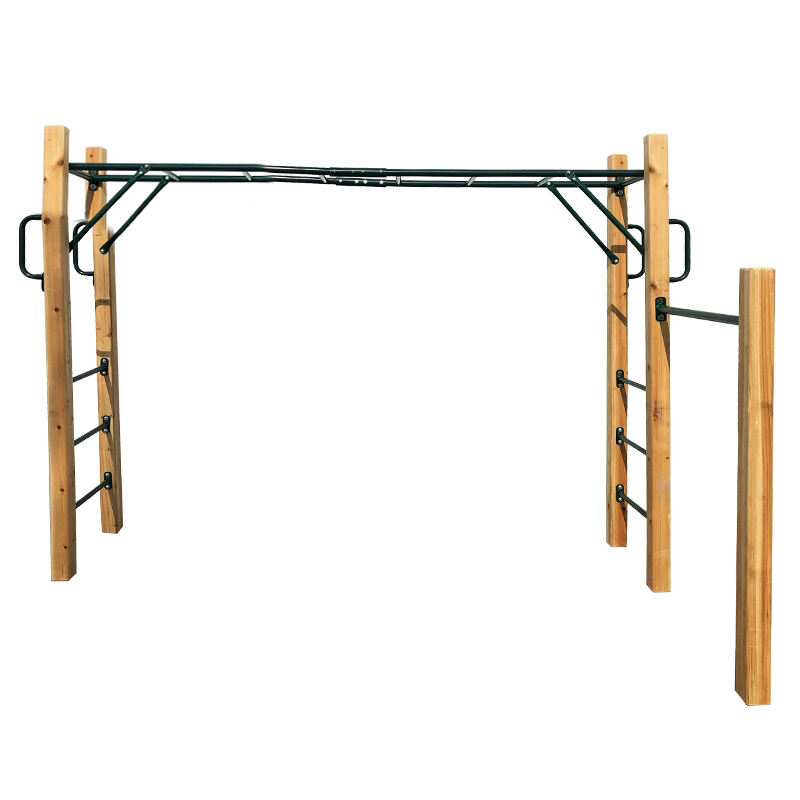Standard playground designs just don't cut it anymore for today's communities, educational institutions, and business parks that want something special. OEM/ODM playground solutions have emerged as the answer for creating customized outdoor areas that actually perform well over time. Schools wanting equipment that reflects their mission statement or companies aiming to install unique play structures can work directly with manufacturers to get exactly what they need. These custom options transform ideas into real world installations that are both safe for children and stand out from generic offerings found at big box stores.
OEM (Original Equipment Manufacturer) and ODM (Original Design Manufacturer) services provide different levels of customization. OEM involves manufacturing equipment based on the buyer’s detailed specifications and designs. In contrast, ODM services handle the design, development, and manufacturing, with some customization based on client feedback.
These two approaches provide flexibility for different stakeholders. Whether you want to build a playground from scratch or select from pre-developed concepts, both options ensure quality and brand alignment.
Choosing OEM/ODM playground equipment goes beyond aesthetics—it's about creating a tailored play environment that matches your project goals, user needs, and safety requirements.
With OEM/ODM services, every component—color, shape, material, and theme—can be adjusted to reflect your institution’s identity. This is especially valuable for theme parks, educational institutions, or commercial properties seeking to deliver unique user experiences.
Custom-manufactured playgrounds are designed to meet or exceed international safety standards such as EN1176 and ASTM. Working with a manufacturer experienced in global compliance ensures that the equipment is not only visually appealing but also structurally sound and child-safe.
By controlling the design and production process, OEM/ODM solutions optimize material usage, logistics, and installation. This leads to better cost management, especially for municipalities or developers managing large-scale infrastructure projects.
Developing playground equipment through OEM/ODM channels involves collaboration, technical expertise, and a structured workflow.
The process begins with idea sharing. Clients provide their design concepts, target audience, age group, and thematic requirements. For ODM services, manufacturers may present pre-developed templates that clients can refine.
Once the concept is approved, the design team creates technical drawings and 3D models. This stage includes structural simulations, safety testing, and usability reviews to ensure the final product aligns with expectations.
Prototypes or sample parts are developed to evaluate materials, functionality, and user interaction. This phase helps identify improvements before committing to full production.
Once the prototype is validated, the project moves to full-scale production. Quality control measures are implemented throughout the process, including raw material checks, welding inspections, surface treatment evaluation, and load testing.
Final products are packaged for safe shipping and include detailed installation manuals. Some manufacturers offer installation assistance or training for onsite teams. Post-installation services often include warranty support and parts replacement.
OEM/ODM playground equipment serves a wide range of clients—from public institutions to private enterprises.
City governments and urban developers utilize OEM services to build playgrounds that match their architectural plans and community development goals.
Schools and early education centers use tailored designs to align playgrounds with educational themes, promote specific skills, or support inclusive play.
For themed environments, playground equipment designed with custom branding, characters, and color schemes ensures consistency and enhances guest experience.
Developers often include playgrounds as value-added amenities. Custom equipment helps differentiate projects and adds visual appeal to shared spaces.

The quality of playground equipment is closely tied to material selection. OEM/ODM manufacturers often provide multiple options based on climate, usage intensity, and aesthetic preferences.
Powder-coated steel, stainless steel, UV-stabilized plastics, and marine-grade aluminum are commonly used for high durability in outdoor conditions.
Many clients now request playgrounds made with recycled plastic lumber or sustainably harvested wood. These materials align with green building initiatives and appeal to environmentally conscious users.
Public installations benefit from anti-graffiti coatings, tamper-proof fasteners, and easy-to-clean surfaces that reduce long-term maintenance costs.
Modern OEM/ODM playground equipment blends creativity with functionality.
More clients demand equipment that supports children of all abilities. This includes wheelchair-accessible ramps, tactile panels, and auditory components to support sensory engagement.
Organic shapes, earthy tones, and natural materials are increasingly popular. These designs create a calming environment and blend seamlessly with green spaces.
Custom systems are often designed for future expansion. Modular elements allow clients to add features over time, adapting to growing communities or changing needs.
Not all manufacturers offer the same level of expertise. When selecting a partner, clients should evaluate several key factors.
Look for a supplier with in-house design, metalworking, plastic molding, and surface finishing capabilities. This ensures consistent quality and streamlined communication.
A reliable manufacturer should provide documentation for materials used, test results, and compliance certifications. This is especially important when exporting equipment to regions with strict regulations.
Good OEM/ODM partners offer collaborative design services, fast revisions, and multilingual support to bridge cultural or regional gaps.
OEM involves building equipment based on your original designs. ODM means the manufacturer offers existing designs with custom options that you can brand or modify.
It depends on the scope of customization. While initial investment may be higher, long-term savings on maintenance, branding value, and user engagement often justify the cost.
Yes, quality manufacturers produce equipment that complies with international standards such as ASTM, EN1176, and ISO certifications.
Depending on complexity, the process typically takes 3 to 6 months from concept to delivery, including design, prototyping, production, and logistics.
 Hot News
Hot News2025-12-03
2025-11-03
2025-11-11
2025-11-19
2025-11-24
2025-11-27